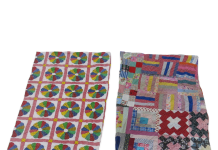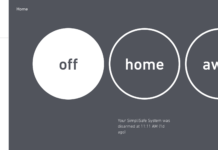Heading home for the holidays? Here’s hoping it’ll be a joyous reunion with friends and family, with plenty of cookies to go around. But if you’ve already been dreading those questions from your great-aunt about your love life, consider the ways we teach the Assistant to have natural conversations—it’ll make the talk your great-aunt a little less dreadful.
I’m on the Assistant’s conversational design team, where we work to make your chats with the Google Assistant as pleasant as possible. I’ve been teaching computers how to talk for nearly 20 years, starting my career working on some of those automated phone systems you’ve probably dealt with when you lost a suitcase at the airport. (In my case on a recent trip to Norway, it took 10 of those phone calls to find that lost bag!)
In my years in the industry, I’ve learned a thing or two about how to make conversations work. And so has the Google Assistant.
Give just the right amount of information.
We’ve all had that one relative who keeps droning on about a boring topic at the dinner table, oblivious to the fact that half the room has dozed off. And sometimes we experience the opposite problem, where we ask someone a question and they don’t provide enough information. Like when I ask my son what time it is, and he responds, “Yes.”
To strike the right balance when we design conversations for the Google Assistant, we follow something called the Cooperative Principle, proposed by Paul Grice in the 1970s. His Maxim of Quantity means we shouldn’t talk too much, or too little.
Here’s an example of a conversation that follows the Maxim of Quantity, along with one that doesn’t.
Do
Uncle Anthony: So, how is your first year of college going?
Me: Great! I’m taking four classes. My favorite is called “Taking care of turtles in the 21st century.” Do you know what a turtle’s favorite food is?
Don’t
Uncle Anthony: So, how is your first year of college going?|
Me: Great! I’m taking four classes. My favorite is called “Taking care of turtles in the 21st century.” Some turtles are carnivores, and some are vegetarian. Sea turtles even eat squid. Leatherback sea turtles can grow to 1000 pounds!
Uncle Anthony: Zzzzzzz….

Illustration by Kimberly Harvey, conversation designer, Google Assistant
Make it clear when it’s the other person’s turn to talk.
We use a variety of signals to let another person know when we’ve finished talking, and when it’s the next person’s turn to talk. For example, when I pause to take a bite of peppermint bark, that’s an opening for the other person to speak. When designing conversations with computers, which aren’t able to use things like eye contact and body language to determine when it’s their turn, it’s key to end each turn with a question or an instruction, to avoid confusion. And that tactic can work with your family, too, so you’re not always talking over one another.
Do
Me: So I went to this awesome concert. Have you ever been to a concert?
Grandma: Yes, I went to see the Beach Boys in 1987. What a show! Who did you see, dear?
Me: Wow, how interesting. I went to a show called Punky Kittens.
Don’t
Me: So I went to this awesome concert. Have you ever been to a concert? I went–
Grandma Zara: Yes, I went to–
Me: –went to the greatest show the other day, and…
Grandma Zara: What?
Me: What?
Acknowledge the person you’re speaking with.
One of our most basic desires as humans is to be understood. We want to know the other person is hearing us correctly, like when you ask your brother to pass the green beans, not the gravy. One way the Assistant does this is by using something called “implicit confirmation.” This is how you let someone know they’ve been heard, and establish trust. Let’s see an example where, due to a misunderstanding, a cranberry crisis nearly occurs:
Do
Me: Hey Joanne, I love (mumble mumble) cranberry sauce!|
Chef cousin who hates canned cranberry sauce: You like canned cranberry sauce?
Me: Actually I said FRESH cranberry sauce…
Chef: Me too!
Crisis averted.)
Don’t
Me: Hey Joanne, I love <mumble mumble> cranberry sauce!
Chef: What? I hate that stuff!
Me: Oh yeah? I don’t see why, you make it every year!
(Crisis!)
Only use visuals when they’re appropriate.
The Google Assistant is available on multiple types of devices, from the voice-only Google Home, to the voice-forward Home Hub, to the multi-modal mobile phone. Because of this, we need to consider when it’s most appropriate to introduce visuals, such as cards or carousels, to the conversation.
Our go-to design principle is to add visuals when they enhance the discussion, and not to let them overshadow the rest of the conversation. Try to keep this in mind when you’re sitting down with family and friends.
Do
Me: I just came back from a trip to Costa Rica, where we saw some amazing monkeys. Here’s my favorite monkey picture! <shows 1 photo>
Everyone: Oooh! How cute!
Don’t
Me: Who wants to see my slideshow of my cruise to Costa Rica? I have 350 photos. Let me find that one on the beach where I saw a monkey. In fact, I’ll show you all 50 of them!
Everyone: (Runs away.)
Get some practice with your Assistant.
Before you head out for the holidays, try having a few conversations with your Google Assistant and see if you can spot these great communication principles in action. We hope that by following some of these best practices, your holiday dinners will be more pleasant and relaxed.
And if you’re looking for some fun things to do with your Google Assistant, try saying “Hey Google, talk to Santa” or “Hey Google, tell me a winter story.”





























![[Update: Fixed] Google Nest outage takes down Thermostat, Cam live video, and apps](http://cdn.smarthometimes.com/wp-content/uploads/2020/04/nest_thermostat_1-218x150.jpg)








